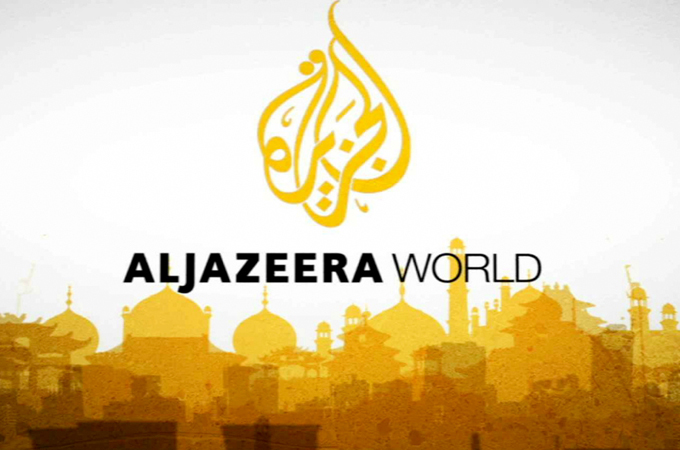
Gaza Lives On
The Israeli blockade may have taken a heavy toll on Gazans, but this film reveals life and hope among the devastation.
Since 2007, most of the approximately 1.5 million Palestinians living in the Gaza Strip have suffered gravely from an intensified land, air and sea blockade imposed by Israel.
The blockade, deemed illegal by the United Nations, was implemented after Hamas, a Palestinian faction labelled a terrorist organisation by Tel Aviv, took control over the territory and ousted Fatah officials from power in the battle of Gaza.
After more than two decades of tight sanctions and even though Israel eased the restrictions on non-military goods in 2010, the blockade continues to take a heavy toll on Gaza’s civilian population, with many essential and basic goods banned from being exported or imported. This has led to rampant poverty and a massive unemployment rate in Gaza.
| “The more Israel thinks about wiping out our people and taking our land, the more we are determined to survive. Thank God we are still living. Some people ask how we can survive under this siege. Thank God, here we are.”
Abu Anwar, corn seller |
But Gaza once had thriving economy and was a major exporter of key staple foods, including fruits and vegetables, to countries across the world. Israel’s policies since the occupation, however, have forced the vast majority of Gazans to rely on foreign humanitarian aid for survival.
According to the UN, about one-third of Gaza’s arable land and 85 per cent of its fishing waters are totally or partially inaccessible due to the Israeli blockade.
Abu Anwar Jahjouh, who has worked as a corn seller for the past 15 years and lives in the Shati refugee camp in Gaza, says it is a daily struggle to scrape out a living: “Back in the 1960s, we used to export oranges. Ships would come from Turkey, Spain, Germany and all of Europe. We used to export oranges, lemons, clementines and grapefruits. But those ships stopped coming to Gaza after 1967. No one comes to Gaza anymore. We can’t export anything. That’s why we started selling corn here on the beach. We sell anything.”
Rebuilding … without materials
The Israeli blockade has also prevented construction materials from entering the Strip, with the exception of some materials intended for internationally-supervised projects.
According to an Oxfam report, in 2008, 95 per cent of Gaza’s industrial operations were suspended due to lack of access to material needed for production and the inability to export produced items.
Kamal Khalaf, a construction contractor, said Israel’s war on Gaza between 2008 and 2009, in which the UN estimates 60,000 homes were damaged or destroyed, made the blockade much more problematic: “After the siege, the import of construction material into Gaza was banned. We had no cement, no steel, nothing. I stayed for two years with no work. There was nothing to build.”
Even construction material needed to build schools has reportedly been blocked from entering the Strip. With half of Gaza’s population under the age of 18, children are attending overcrowded schools – with many running multiple shifts – which has severe repercussions for the quality of education they receive.
In addition to this, thousands of children remain displaced from their homes – having lost all that is familiar to them, including clothes, toys, school books and a secure environment.
Israel even bans fishermen from going more than three miles from Gaza’s shoreline for “security reasons”. Those who breach the rule regularly run the risk of being shot at by Israeli navy patrols. At least seven fishermen have been killed by the Israeli navy in recent years and many more have been injured or arrested.
An underground lifeline
As a result of the blockade, underground tunnels have been Gaza’s main lifeline to Egypt and the rest of the world.
“We wanted to live, so we had to look for solutions …. We started to bring sacks of concrete into Gaza through these tunnels. It was exhausting to lift those heavy sacks inside these tunnels,” Khalaf says.
As well as being used for the smuggling of goods, the tunnels have also helped reunite families unable to enter Gaza through legal means.
May Wardeh met her husband Mohammad in the West Bank, but had to travel for four days via Jordan to Egypt and then through an underground tunnel to reach Gaza. She says she almost died just to get to him in Gaza, but then they had a big wedding party at the beach and she now lives with her husband in the Nuseirat refugee camp in central Gaza.
“I thought I’d see a worsening situation in a city full of refugee camps. But when I reached Gaza, I saw something completely different from what I had imagined,” Wardeh says, recalling her first day in Gaza.
Sharif Sarhan is a photographer from Gaza who works with several news agencies and international organisations. He is amazed by the Gazans’ strength and determination to live their lives and rebuild their city despite the siege and destruction.
“You can always find life and hope in Gaza,” he says. “Amid this devastation, you can see that people still want to live.”
Click here for more Al Jazeera World. |
